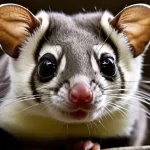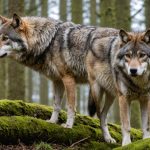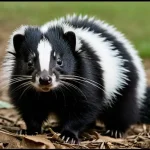Cats as Natural Predators in the Ecosystem
Cats as predators play a crucial role in natural pest control. Their hunting instincts target rodents and various small prey, helping to regulate populations that could otherwise grow unchecked. This natural pest control is vital for agricultural areas and urban environments alike, where unchecked rodents may cause damage or spread disease.
By influencing the population dynamics of prey species, cats as predators help maintain a balanced ecosystem. When rodent numbers rise sharply, cats often increase their hunting activity, which in turn reduces prey abundance. This interaction prevents overpopulation that could lead to resource depletion or habitat degradation.
Additional reading : How Can You Care for Your Cat’s Emotional Well-being?
The ecological roles of cats extend beyond just pest control; they contribute significantly to maintaining ecosystem equilibrium. In certain habitats, their presence curbs invasive species and supports biodiversity by controlling species that threaten native flora and fauna. Understanding the ecological roles of cats allows for better appreciation of their contribution to ecosystem health and highlights why their presence can be beneficial rather than problematic.
Impact of Cats on Wildlife Populations
Domestic and feral cats exert a significant cat predation impact on various native species, particularly birds, reptiles, and small mammals. Scientific studies have documented that cats contribute substantially to wildlife mortality, often reducing local populations and threatening biodiversity. For example, research shows cats kill billions of birds and mammals annually worldwide, making them one of the leading predators in many ecosystems.
Also to read : What Makes Cats the Purr-fect Companions in UK Households?
The threats to native species arise because cats are efficient hunters with behaviors that disrupt ecological balances. Unlike native predators, cats hunt a wide range of prey indiscriminately, including endangered or vulnerable animals. In some regions, this has led to drastic declines in native bird populations and even local extinctions of small mammals and reptiles.
A notable example is in Australia, where feral cats have contributed to the decline of several marsupial species. Likewise, island ecosystems such as those in New Zealand suffer greatly, where native birds evolved without mammalian predators and are especially vulnerable to cat predation. These cases highlight how cat predation impact extends beyond individual deaths to broader ecosystem disruption, amplifying threats to biodiversity and native wildlife conservation efforts.
Cats and the Food Chain
Understanding cats’ position in local food chains reveals their role as both predators and competitors. As skilled hunters, domestic and feral cats often occupy mid-level trophic levels, feeding on rodents, birds, and insects. This predatory behavior directly influences populations of smaller prey species, sometimes causing significant declines.
Their presence can alter predator-prey relationships by competing with native predators such as foxes and small wildcats for similar food sources. In some ecosystems, this competition results in shifts in predator dominance, affecting biodiversity and the balance of species.
Moreover, cats’ hunting activities trigger ripple effects across ecological communities. For instance, reducing certain prey populations can indirectly impact vegetation, as herbivorous species may experience population changes due to altered predation pressure. These cascading impacts highlight the interconnectedness of species within food webs and the importance of considering cats’ ecological roles when managing wildlife.
By analyzing these dynamics, we can better appreciate the complexity of cats’ influence on food chains and develop informed strategies to maintain ecosystem balance.
Influence on Biodiversity and Ecological Balance
Understanding the impact of cats on biodiversity is crucial, especially in urban, rural, and island ecosystems. Cats, often considered as part of local fauna, can disrupt ecosystem health by preying on native species. In many cases, they function as invasive species, particularly on islands where native wildlife evolved without such predators.
Cats and biodiversity interact in complex ways. Their presence can lead to significant declines in populations of small mammals, birds, and reptiles, altering food webs and reducing species diversity. For instance, ground-nesting birds often suffer severe losses, compromising reproductive success and leading to long-term population declines.
The invasive nature of cats poses challenges for conservation. On isolated islands, cats have been identified as primary drivers of native species extinctions, disrupting ecological balance. This raises concerns about ecosystem resilience, as reduced biodiversity can diminish an ecosystem’s ability to recover from environmental stresses.
Managing the influence of cats, including controlling feral populations, is essential to preserving biodiversity and maintaining healthy, functioning ecosystems. Recognizing cats as invasive species in sensitive environments allows for targeted conservation strategies that support the survival of native species and overall ecosystem stability.
Human-Cat Interactions and Environmental Management
Understanding the human impact on cat populations is crucial. Humans have cultivated a range of feline groups, including domestic cats, strays, and feral colonies. Each group interacts differently with the environment, and managing their populations demands nuanced strategies. Domestic cats often thrive due to human care, while strays and feral cats can affect local ecosystems by hunting native wildlife.
Cat population management employs various approaches, with Trap-Neuter-Return (TNR) programs being one of the most effective. TNR reduces population growth humanely by sterilizing cats and then releasing them, which helps control numbers without culling. Regulations on pet ownership, feeding strays, and public education also play vital roles in reducing unintentional support that leads to growing feral populations.
However, balancing these measures with conservation priorities is challenging. While cats aid in pest control, they can negatively impact native bird and small mammal populations. Coexistence strategies must therefore integrate ecological knowledge, encouraging responsible pet ownership and promoting habitats where native species can flourish alongside managed cat populations. This ensures sustainable environments benefiting both humans and feline communities.





